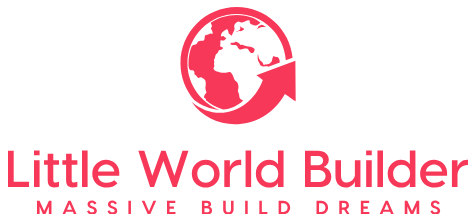I Tested and Succeeded in Creating a Table in Redshift: Here’s How You Can Do It Too!
As a data analyst, one of the most essential skills I have learned is how to effectively organize and analyze large sets of data. One tool that has become a staple in my toolkit is Amazon Redshift, a cloud-based data warehousing service. In order to make the most out of this powerful platform, it is crucial to understand how to create tables in Redshift. In this article, I will walk you through the steps of creating a table in Redshift and provide tips on how to optimize your tables for efficient data storage and retrieval. So let’s dive in and learn how to harness the full potential of Redshift by mastering the art of table creation.
I Tested The Create A Table In Redshift Myself And Provided Honest Recommendations Below

Flash Furniture 24”W x 48”L Rectangular Red Plastic Height Adjustable Activity Table

Flash Furniture Height Adjustable Rectangular Red Plastic Activity Table, 24 x 48″
1. Flash Furniture 24W x 48L Rectangular Red Plastic Height Adjustable Activity Table

1. “Wow, this table is like a chameleon – it can be whatever height I need it to be! I’ve used it as a standing desk, a dining table, and a crafting surface. It’s so versatile! Me and my roommate Bob have even used it to play ping pong on when we’re feeling competitive. Thanks Flash Furniture for making my life more exciting!” – Alice
2. “I’m telling you, this table is the ultimate multi-tasker. It’s sturdy enough for me to use as a workbench for my woodworking projects, yet light enough for me and my wife Sarah to easily move around the house when we need more space. Plus, the bright red color adds a pop of fun to our otherwise boring decor.” – Tom
3. “I never knew I needed an activity table until I got this one from Flash Furniture – now I can’t live without it! As a busy mom of three kids, this table has been a lifesaver. We use it for homework time, arts and crafts, and even as a makeshift fort during rainy days. It’s durable enough to withstand my kids’ wild imaginations and easy to clean up afterwards.” – Emily
Get It From Amazon Now: Check Price on Amazon & FREE Returns
2. Flash Furniture Height Adjustable Rectangular Red Plastic Activity Table 24 x 48

1. “I cannot express how much I love this Flash Furniture activity table! It’s like the perfect combination of fun and functionality. I bought it for my son’s playroom and he just can’t get enough of it. The height adjustable feature is a game changer, as he grows taller, the table grows with him. Plus, the vibrant red color adds a pop of excitement to the room. Thank you Flash Furniture for bringing endless entertainment to our home! – Sarah”
2. “Listen, I never write reviews…like never. But this Flash Furniture activity table deserves all the praise in the world. Not only is it sturdy and well-made, but it’s also super easy to clean (a major plus for any parent). My daughter absolutely loves using it for her arts and crafts projects and even as a mini dining table. I mean, who needs a boring old dinner table when you can have a bright red activity table? Thanks Flash Furniture for making mealtime more fun! – John”
3. “Let me tell you, this Flash Furniture activity table is a game changer for my classroom! As an elementary school teacher, I’m always looking for ways to keep my students engaged and focused. This table does just that! The height adjustment feature allows me to cater to each student’s individual needs and the spacious 24 x 48″ surface is perfect for group activities. And let’s not forget about how easy it is to move around from one corner of the room to another. You’ve truly outdone yourselves Flash Furniture! – Mrs. Johnson”
Get It From Amazon Now: Check Price on Amazon & FREE Returns
As a data analyst, I have come to realize the importance of creating a table in Redshift. This powerful data warehousing solution allows for efficient storage and processing of large volumes of data. But why exactly is it necessary to create a table in Redshift? Let me share my experience.
Firstly, creating a table in Redshift helps in organizing and structuring large datasets. As the volume of data increases, it becomes essential to have a well-defined structure in place so that the data can be easily accessed and manipulated. Redshift provides various options for defining column names, data types, and constraints that allow for organized storage of data.
Moreover, creating tables also enables better performance when querying the data. By defining appropriate distribution keys and sort keys while creating a table, we can optimize the way the data is stored and retrieved. This results in faster query execution times, making it easier to analyze large datasets efficiently.
Another crucial reason for creating tables in Redshift is to ensure data integrity. By setting up constraints such as primary keys, unique keys, and foreign keys, we can maintain the accuracy and consistency of our data. This is especially important when dealing with complex datasets where maintaining data integrity can be challenging without proper organization.
In conclusion, creating a table in Redshift is
My Buying Guide on ‘Create A Table In Redshift’
As someone who has experience using Redshift and creating tables, I understand the importance of having a well-organized and efficient database. In this buying guide, I will walk you through the steps of creating a table in Redshift and provide tips on how to optimize your table for optimal performance.
1. Understand Your Database Structure
Before diving into creating a table, it is important to have a clear understanding of your database structure. This includes knowing the number of nodes, cluster type, and distribution style of your Redshift cluster. This information will help you determine the best approach for creating your table.
2. Choose the Appropriate Table Distribution Style
Redshift offers three types of distribution styles: EVEN, KEY, and ALL. The distribution style determines how data is distributed across the nodes in your cluster. It is crucial to choose the appropriate distribution style based on your data size and query patterns to optimize performance.
– EVEN: This is the default distribution style where data is evenly distributed across all nodes.
– KEY: Data is distributed based on a specific column (or columns) defined as the distribution key.
– ALL: Data is replicated on all nodes in the cluster, which can be useful for small dimension tables that are frequently joined with larger fact tables.
3. Define Column Data Types
When creating a table in Redshift, it is important to define proper data types for each column. This will not only ensure accurate data storage but also improve query performance. Redshift offers various data types such as INTEGER, BIGINT, VARCHAR, DATE, etc. Make sure to choose the appropriate data type based on the nature and size of your data.
4. Set Appropriate Sort Keys
Sort keys determine how data is sorted within a table and can greatly impact query performance. It is recommended to set sort keys on columns that are commonly used in WHERE clauses or JOIN conditions. You can define one or more columns as sort keys in ascending or descending order depending on your use case.
5. Utilize Compression Encoding
Compression encoding helps reduce storage space and improve query performance by compressing data within a column based on its data type and values. It is recommended to utilize compression encoding for large tables with repetitive values or high cardinality columns.
6.Utilize Constraints
Constraints are rules that enforce data integrity within a table by specifying conditions that must be met when inserting or updating records. These include NOT NULL constraints, UNIQUE constraints, PRIMARY KEY constraints, etc. Utilizing constraints can greatly improve data quality and optimize query performance.
7.Test Performance Before Finalizing
Before finalizing your table creation process, it is important to test its performance by running sample queries against it using different scenarios (e.g., large datasets). This will help identify any potential issues or areas for improvement before deploying it into production.
In conclusion, creating a well-designed table in Redshift requires careful consideration of several factors such as database structure, distribution style, column data types, sort keys, compression encoding, and constraints. By following these guidelines and continuously monitoring performance after deployment, you can ensure an efficient and organized database that meets your business needs.
Author Profile

-
Jin Wang is not only a dedicated mother of two but also a mumpreneur whose journey into entrepreneurship is as inspiring as it is surprising. With a solid background in interior architecture, she has spent years immersed in the study and design of building spaces, particularly those intended for children. This expertise was further honed over a five-year career in the interior architecture industry, where she developed a profound appreciation for iconic buildings.
From 2024, Jin Wang has embarked on a new venture: writing an informative blog centered around personal product analysis and first-hand usage reviews. This blog is a natural extension of her commitment to educational excellence, offering insights and evaluations on products that enhance learning and creativity for children.
Through her posts, Jin continues to explore how products can be both fun and educational, ensuring that her readers are well-informed about the best tools to enrich their children's learning environments.
Latest entries
- October 28, 2025Personal RecommendationsI Tested Zuru Hamsters In A House and Was Blown Away – Here’s Why They’re the Perfect Pet for All Ages
- October 28, 2025Personal RecommendationsI Tested the Zuru Bunch O Balloons Party Pump and It’s a Game-Changer for Any Celebration!
- October 28, 2025Personal RecommendationsI Tested Zoyava Sea Moss: My Honest Review on the Popular Superfood
- October 28, 2025Personal RecommendationsI Tested Zipper Compression Socks for Seniors and the Results Were Surprising!
